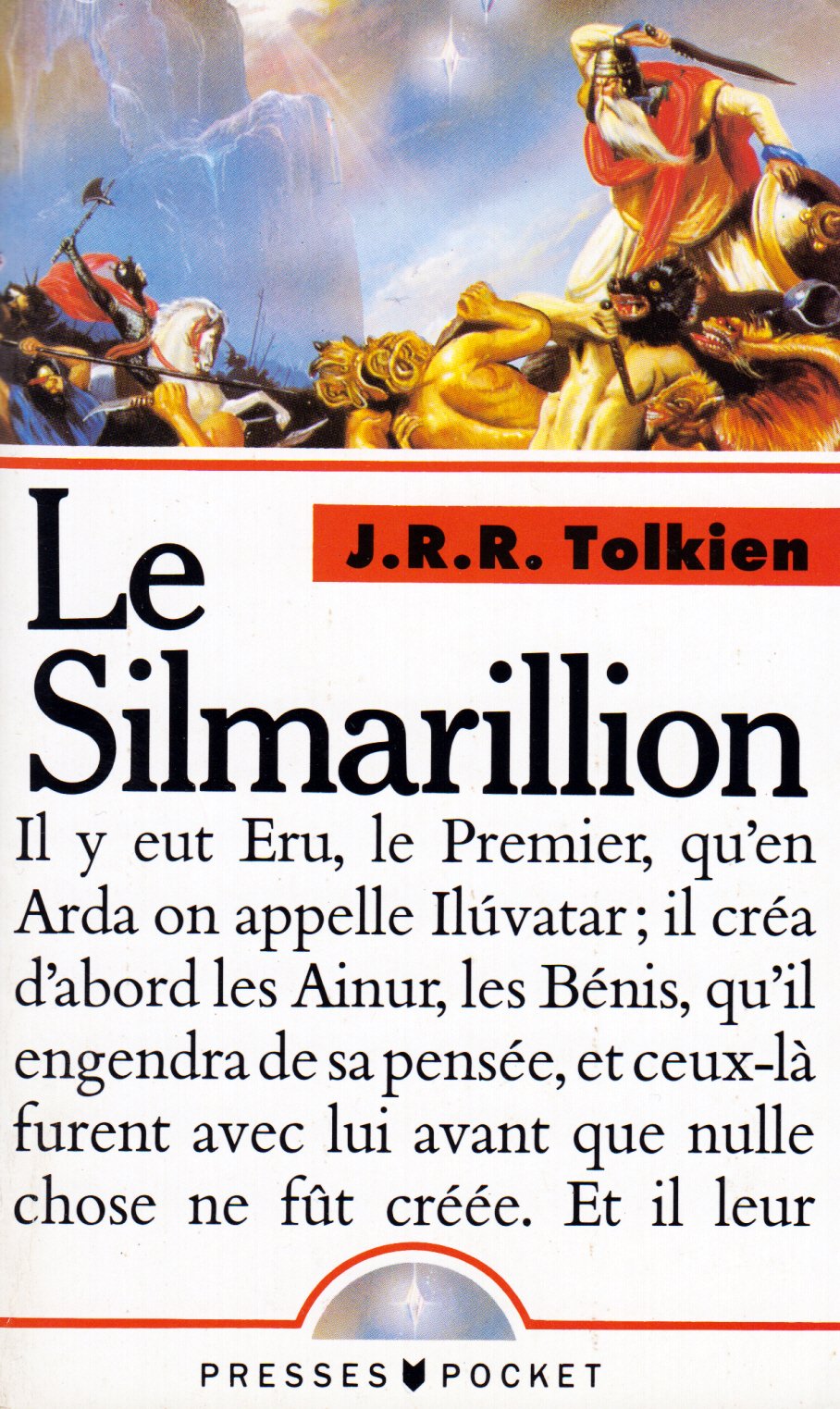fdillanes reviewed El silmarillion by J. R. R. Tolkien
Excelente
5 stars
La primera vez que lo empecé me pareció sorprendente y a la vez un bodrio. La santidad suele serlo. La historia de luthien y berren justifica todo.

333 pages
French language
Published Jan. 21, 1999 by Presses Pocket.
The Silmarillion (Quenya: [silmaˈrilliɔn]) is a collection of myths and stories in varying styles by the English writer J. R. R. Tolkien. It was edited and published posthumously by his son Christopher Tolkien in 1977, assisted by the fantasy author Guy Gavriel Kay. It tells of Eä, a fictional universe that includes the Blessed Realm of Valinor, the once-great region of Beleriand, the sunken island of Númenor, and the continent of Middle-earth, where Tolkien's most popular works—The Hobbit and The Lord of the Rings—are set. After the success of The Hobbit, Tolkien's publisher Stanley Unwin requested a sequel, and Tolkien offered a draft of the writings that would later become The Silmarillion. Unwin rejected this proposal, calling the draft obscure and "too Celtic", so Tolkien began working on a new story that eventually became The Lord of the Rings. The Silmarillion has five parts. The first, Ainulindalë, tells in mythic …
The Silmarillion (Quenya: [silmaˈrilliɔn]) is a collection of myths and stories in varying styles by the English writer J. R. R. Tolkien. It was edited and published posthumously by his son Christopher Tolkien in 1977, assisted by the fantasy author Guy Gavriel Kay. It tells of Eä, a fictional universe that includes the Blessed Realm of Valinor, the once-great region of Beleriand, the sunken island of Númenor, and the continent of Middle-earth, where Tolkien's most popular works—The Hobbit and The Lord of the Rings—are set. After the success of The Hobbit, Tolkien's publisher Stanley Unwin requested a sequel, and Tolkien offered a draft of the writings that would later become The Silmarillion. Unwin rejected this proposal, calling the draft obscure and "too Celtic", so Tolkien began working on a new story that eventually became The Lord of the Rings. The Silmarillion has five parts. The first, Ainulindalë, tells in mythic style of the creation of Eä, the "world that is." The second part, Valaquenta, gives a description of the Valar and Maiar, supernatural powers of Eä. The next section, Quenta Silmarillion, which forms the bulk of the collection, chronicles the history of the events before and during the First Age, including the wars over three jewels, the Silmarils, that gave the book its title. The fourth part, Akallabêth, relates the history of the Downfall of Númenor and its people, which takes place in the Second Age. The final part, Of the Rings of Power and the Third Age, is a brief summary of the events of The Lord of the Rings and those that led to them. The book shows the influence of many sources, including the Finnish epic Kalevala, Greek mythology in the lost island of Atlantis (as Númenor) and the Olympian gods (in the shape of the Valar, though these also resemble the Norse Æsir). Because J. R. R. Tolkien died leaving his legendarium unedited, Christopher Tolkien selected and edited materials to tell the story from start to end. In a few cases, this meant that he had to devise completely new material, within the tenor of his father's thought, to resolve gaps and inconsistencies in the narrative, particularly Chapter 22, "Of the Ruin of Doriath".The Silmarillion received a generally poor reception on publication. Scholars found the work problematic, not least because the book is a construction, not authorised by Tolkien himself, from the large corpus of documents and drafts also called "The Silmarillion". Scholars have noted that Tolkien intended the work to be a mythology, penned by many hands, and redacted by a fictional editor, whether Ælfwine or Bilbo Baggins. As such, the scholar Gergely Nagy considers that the fact that the work has indeed been edited actually realises Tolkien's intention.
La primera vez que lo empecé me pareció sorprendente y a la vez un bodrio. La santidad suele serlo. La historia de luthien y berren justifica todo.
Étant fan de l'univers depuis ma vision de la trilogie puis la lecture des romans, j'ai apprécié les précisions à propos des origines et les filiations. Cette lecture se différencie notamment de LOTR par le peu de description. C'est plus une suite d'événements historiques qui nous ait raconté (un peu comme un-e prof d'histoire qui essaye de résumé son cours). Pour finir, une petite mention aux personnages féminins restreints à des rôles stéréotypés (mère, épouse, sœur de) et plutôt décrites par leur beauté que par leurs compétences. Critique qui était déjà présente dans LOTR. Je conseil cette lecture aux fans de l’univers ou aux personnes voulant approfondir le lore sinon s'abstenir.